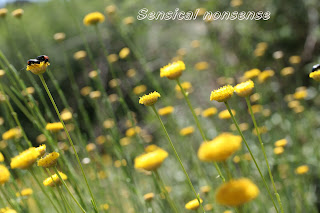This is one of my favorite orders of insect if not thee favorite one. And here are some of my past photos of them. I have mainly traveled in Spain and in Norway the last years and hence that is their origin. They are an amazing group to work with and you have everything from the easily identifiable to the very hard ones where you have to dissect the genitalia to be able to confirm the species. It is a huge and diverse group and it is amongst the three largest orders of insects we know today. They have concurred an array of different habitats all over this world. I myself worked with Carabidae and Staphilynidae from the mountain areas in Norway, then as a re-sampling project of this article (Ottesen, 1996). I am not the only one interested in these fascinating creatures (went a little David Attenborough there). In addition to being one of the most studied groups of insects it is also collected by people all over the world, and for huge sums of money. This has in some cases become a problem for the survival of some species (New, 2007).
NEW, T. 2007. Beetles and conservation. In: NEW, T. R. (ed.) Beetle Conservation. Springer Netherlands.
OTTESEN, P. S. 1996. Niche Segregation of Terrestrial Alpine Beetles (Coleoptera) in Relation to Environmental Gradients and Phenology. Journal of Biogeography, 23, 353-369.
Carabus coreaceus
Carabidae; Cicindela rupestris
Cantharidae; Chantaris nigra
Cerambycidae; Rhagium inquisitor
This is just to show that looking for beetles takes you to some beautifull places. A sunny day and your camera surrounded by life. Does not get to much better than that,
Family; Meloidae,After spending some time searching in various litterature i finally found a good match. This appears to be Physomeloe corallifer, a blister beetle endemic to The Iberian penninsula.
That is all for now. I will post a similar post on my other pet group of animals...the spiders, and then whatever i feel like talking about








Carabidaebildene er særs pene, nice!
SvarSlettEg synst Rhagium-en, Cicindela-en og Meloiden er dei stiligaste, men eg er snål. Rankinga di er 1) Coleoptera, 2) Araneae, 3) Malacostraca?
SvarSlettEg lurar på korleis lista di hadde sett ut om du hadde kjøpt denne, lasta ned denne og brukt litt kvalitetstid med ei lys- eller malaisefelle. Men eg er berre ein misjonær.
Vel med en de tre som utgangspunkt så blir det litt som den lille gutten i godtebutikken. Vanskelig å være helt der. Fo eksempel så syntes jeg at som fotoobjekter er coleoptera best. Men økologien til Aranea mer spennende, mens phylogenien i allefall i min smale verden av malacostraca er innihampen spennende. Jeg så nettopp et tilbud på en slik en:
SvarSletthttp://www.bioquip.com/specials/product_special.asp
Tusen takk for den Hymenopteralinken. Den sparket rumpe. Ha en good quizzzzzz.
Testing av å legge inn link slik Gunnar får til: skamløs egenreklame hvis dette funker
SvarSlettI win!
SvarSlettI encurage to follow the link Kat just tested. I am Morten and i support this message :-)
SvarSlettI'm thinking maybe Lytta for the blister beetle and Lethrus for the scarab - just guesses based on what I've seen over the years, but I'm not an expert on the European fauna.
SvarSlettNice blog you've got here!
regards--ted
Found the blisterbeetle Physomeloe corallifer, however the scarabid continues to evade me. I have some friends i will try to get some help from. The distribution of Lethrus is not well charted but i do beleeve it is possible given the general apperance.
SvarSlett